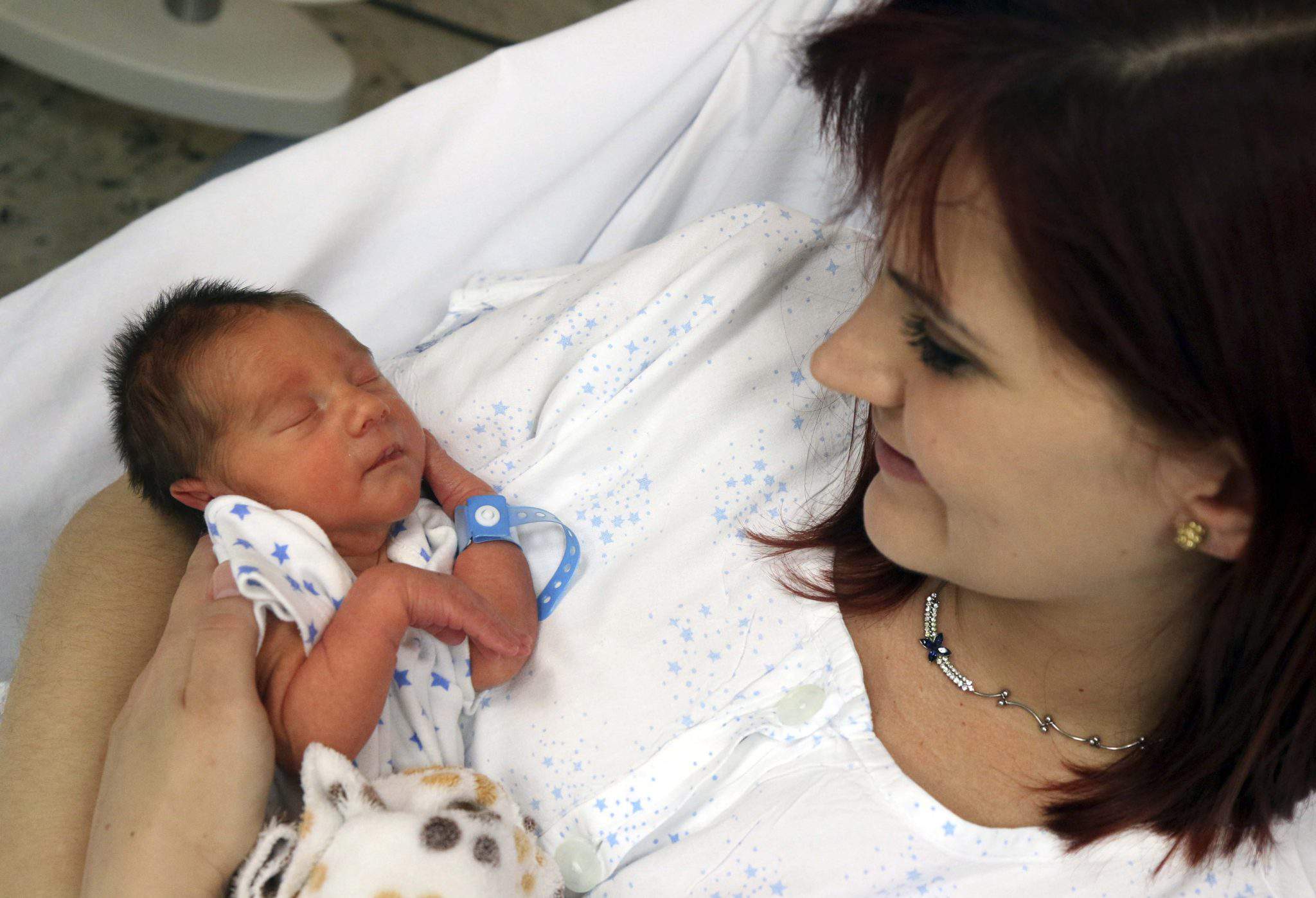Interesting survey: More than half of Hungarians live in municipality of birth
Miskolc, 2017. szeptember 14. Szilágyi Laura karjában hármas ikreinek egyikével, Surányi Milánnal Miskolcon, a Borsod-Abaúj-Zemplén Megyei Központi Kórház és Egyetemi Oktató Kórház koraszülött osztályán 2017. szeptember 14-én. A gyerekek spontán fogantatást követõen a terhesség 33. hetében császármetszéssel jöttek világra szeptember 5-én. MTI Fotó: Vajda János
Fully 52 percent of the Hungarian population lives in their municipality of birth, while 23 percent lives in their county of birth, the Central Statistical Office (KSH) reported on Friday.
Around half of parish residents live in their administrative area of birth as do half of city residents, KSH said detailing the results of the latest micro census taken midway between two censuses.
Geographic stability is highest among residents of Jász-Nagykun-Szolnok County in central and Hajdú-Bihar County in eastern Hungary, with two-thirds of those counties’ residents still living in their areas of birth. Among Budapest residents, this ratio is 29 percent and 45 percent among Pest County residents, KSH found.
Geographic stability is more characteristic among young people, with 70 percent of the under-30 population still residing in their place of birth.
Fully 46 percent of the 30-49 age bracket and 41 percent of people over the age of 50 live in their area of birth.
In 2016, more than one-fifth of the Hungarian population lived at the same address since birth.
Almost 60 percent of people over the age of 65 and two-fifths of those in the 50-64 age group moved to their present address before 1990.
Among the younger sections of the population, the majority of those in the 15-29 and 30-49 age brackets moved to their current address within the past six years. The majority of those under the age of 15 have lived at the same address since birth.
The greying of the Hungarian population has continued to accelerate since the last census in 2011, the micro census found. Since then, the number of minors dropped by some 26,000 while the over-65 age group expanded by 144,000.
The national average age was 42, about a year older than in the last census. The average age among men was 40 years compared with 44 years among the female population.
Hungary’s sex ratio is slowly balancing out,
with the country having 1,096 females per 1,000 males in 2016 compared with 1,106 females per 1,000 males.
The micro census also found a growth in the number of non-marital partnerships with 1,087,000 people currently living in such partnerships.
The country’s birth rate continues to decline, KSH found, with 104 children being born to 100 fertile women in 2016 compared with a birth rate of 136 babies per 100 women in 1990.
As we wrote before, in the first six months of 2017, 0.2 percent more births were recorded than a year earlier, while the number of deaths was 8.5 percent higher than the same period in 2016. There were 43,870 births and 69,062 deaths in the first six months of 2017, KSH said.
Also interesting, every third employee in Hungary is a commuter. Almost 1,5 million Hungarians work outside their hometown or village, and most of the commuters live in Budapest, Érd and Budakeszi.
Photo: MTI
Source: MTI
please make a donation here
Hot news
POLITICO: The price MOL would accept to abandon Russian oil in Hungary
BREAKING! Three-year minimum wage agreement set to impact everyone’s pay in Hungary 🔄
Is Hungary’s safety at risk? Police face serious challenges
Budapest Mayor Karácsony reveals candidates for deputy positions
Depreciation uncovered: Why has the Hungarian forint weakened so much in recent years?
Dynamic wage growth expected in coming years in Hungary, Orbán cabinet believes




